Weeds are no fun.
It’s true.
They have horrible, unappealing shapes, sticking out all over the place like a bad haircut. It makes them obvious in your nice, thick, green lawn. And it can make you look like a neglectful Northern Virginia homeowner.
It’s just not cool.
Weeds are also very cunning. They sneak in wherever they can, embracing every opportunity to take over.
And while most people see weeds as one category of menace, there are actually two types of weeds: broadleaf weeds and grassy weeds in Leesburg, Ashburn, and Aldie, VA. These two weed types may look similar to the untrained eye, but they are pretty different.
Let’s look at broadleaf weeds vs. grassy weeds so you can understand the differences between these two weeds and learn how to keep them out of your yard.
Learning About Broadleaf Vs. Grassy Weeds
All weeds are bad, sure. And they are all repulsive. We can agree on that.
But all weeds are not actually the same.

There are some similarities and differences between grassy weeds vs broadleaf weeds. Here, we’ll look at each type of weed in Northern Virginia and talk about some examples of each.
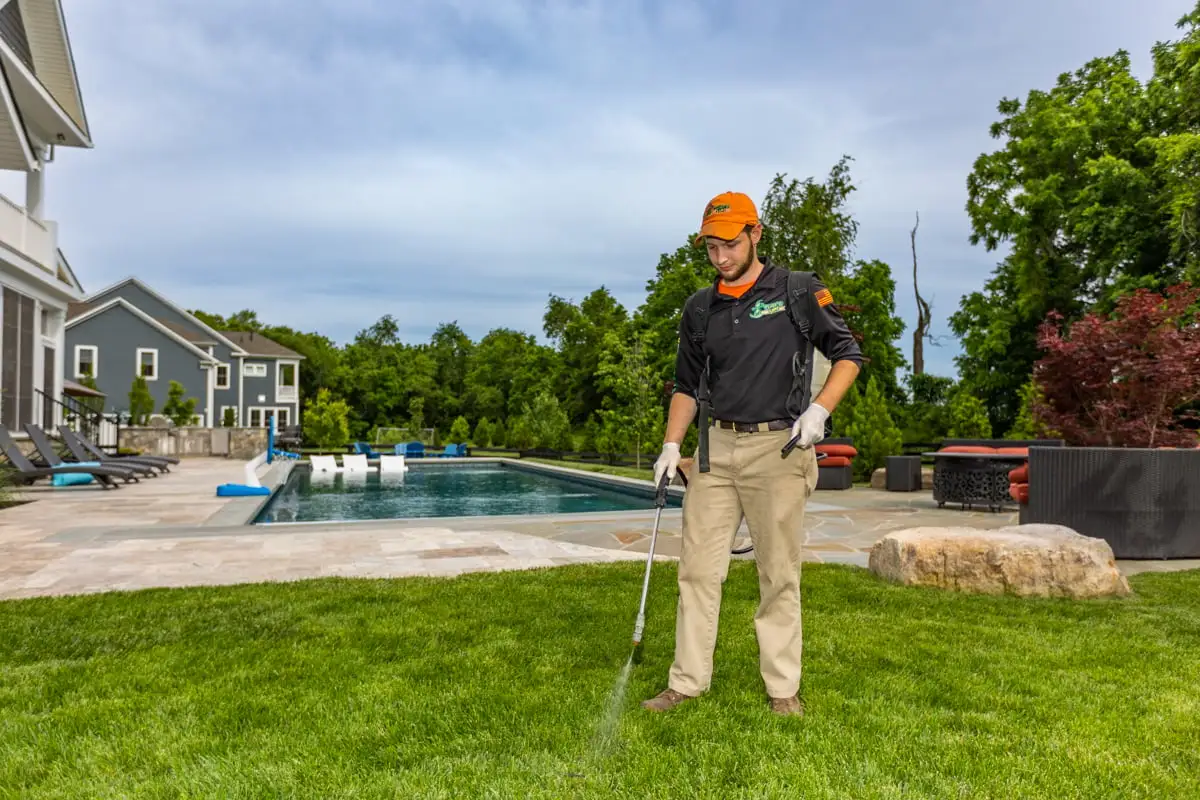
Understanding Broadleaf Weeds
Broadleaf weeds represent a wide range of weed types.
They can grow annually, biennially, or perennially, making them tough to identify and control. Broadleaf weeds can grow in different ways and multiply very quickly in your lawn.
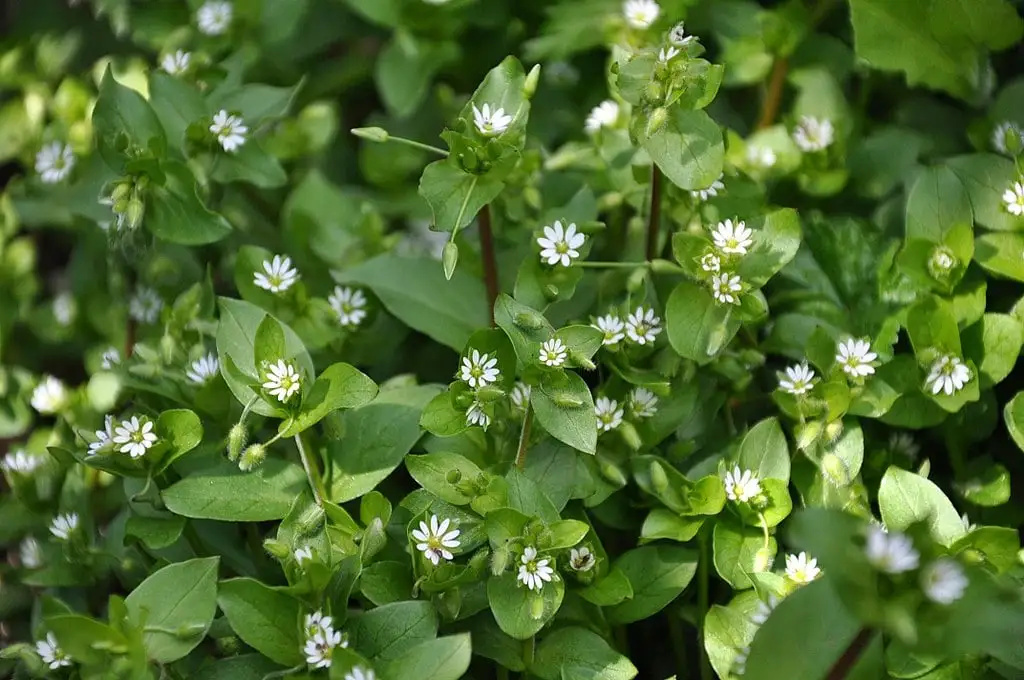
Broadleaf weeds can best be spotted by their wide, broad leaves and flower clusters or sometimes single flowers.
Some examples of broadleaf weeds include:
- Chickweed – As one of the most common weeds in Northern Virginia, chickweed is one of the first weeds to appear in early spring. You can identify this weed by its fleshy leaves and small, white flowers, which each have five petals like little stars. Thriving in shade and thinner areas of the lawn, chickweed typically grows in thick patches, crowding out the good green grass you’d prefer. Germinating in winter and dropping seeds in spring until rising temperatures make it die off, chickweed is a winter annual weed. That means the best way to control it is with selective, liquid, broadleaf weed control before it has the opportunity to die and come back stronger again the next year.
- White Clover – This example of a broadleaf weed has three round leaves and hugs the ground pretty closely. While small, this weed is pretty mighty. In fact, this seemingly innocent tiny, white-flowered weed will choke out your lawn if you give it the chance. Clover likes lawns with a low soil pH or compacted soils. Thick, properly fertilized lawns are great ways to keep clover out, as are lawns with good soil pH and that receive annual aeration, overseeding, and topdressing services. Spraying white clover with liquid, selective, broadleaf weed control as it emerges can help control it.
- Dandelion – You can usually spot dandelions instantly by their large, bright,
yellow flowers. Versatile and hardy, this weed thrives in moist soil and lots of sunshine. And what makes this weed tricky is that its seeds can live in your soil even when conditions aren’t great for growth, waiting for the right moment to germinate. Dandelion seeds are also carried by wind so they can cause new weeds miles away. And since it’s a perennial, dandelions can come back even if they die above the soil surface. Luckily, these weeds can be easy to control if sprayed at the right time and with the right product, which is a liquid, selective, broadleaf weed control applied to dandelions when they are actively growing. - Henbit – This winter annual weed has square stems and egg-shaped leaves until it erupts with deep purple flowers in spring. But once this weed flowers, it becomes much more difficult to control. As part of the mint family, henbit develops during the autumn months, sneaking in any growth it can get during those last warm days of the season. It completes its growth in spring, quickly invading your thinnest lawn areas first where there is shade and moisture. While this weed will typically die out when warmer weather arrives later in spring, it can be controlled fairly fast with liquid selective, broadleaf weed control. That way you don’t have to deal with it for months before it’s gone.
- Bittercress – If you leave bittercress to grow, this example of a broadleaf weed can quickly spread. Growing to 3 to 9 inches long, this member of the mustard family has slightly scalloped leaves with tiny, white flowers that grow at the end of stems. It’s a tall, leggy eyesore that you’ll usually find in late winter through spring. And when it reaches its full height, bittercress’ seed pods explode, meaning you’ll just have more of it to deal with the following year. If you have lots of rain, in addition to poor drainage, you can make bittercress worse in your yard. A thick, healthy lawn is a great defense against bittercress. If you know you tend to get this spring weed problem, a comprehensive lawn care program that includes weed control strategies can help keep this weed at bay.
Understanding Grassy Weeds
Grassy weeds, as their name suggests, like to pretend they are grass. They even share some traits of your lawn, but don’t actually produce the same quality grass that you want.
The invasive roots of grassy weeds can easily take over healthy lawn roots and can cause your grass to look pretty shabby.
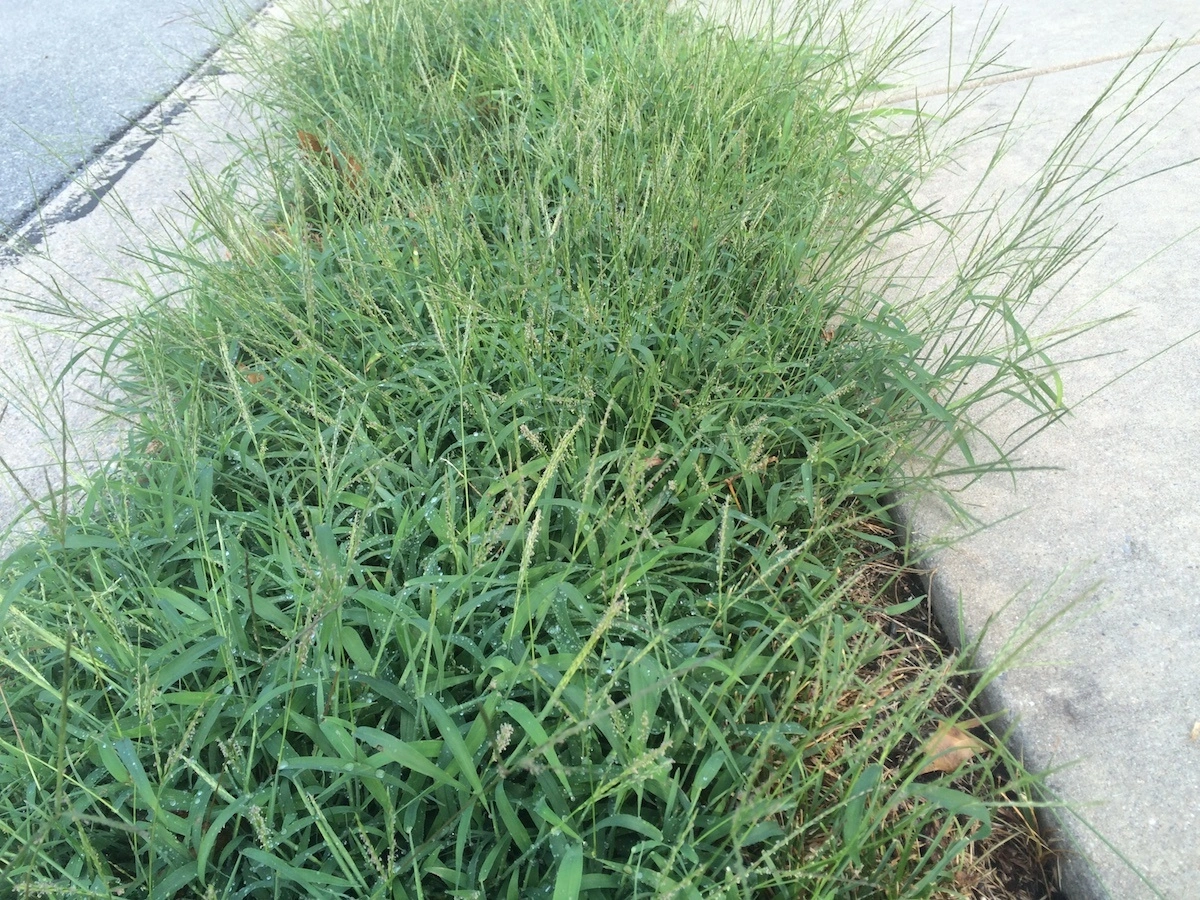
With grassy weeds, you’re looking for patches of quick-growing grass that shoots up taller than the regular grass.
Some examples of grassy weeds include:
- Crabgrass – This monster of a weed enjoys sun and warm temperatures. It also takes full advantage of thin or stressed out lawns where it bullies its way in. If you’ve mowed your lawn too short in some spots or scalped it, crabgrass will find a way in. Crabgrass especially targets lawns without enough water, adequate nutrition, or drainage. This aggressive weed can produce more than 75,000 seeds, so your weed problem can continue to escalate year after year until you take care of it. When thick crabgrass patches form, they choke out good grass, leaving thin, bare areas behind. A thick, thriving lawn can keep crabgrass at bay. To control crabgrass, use a pre-emergent weed treatment that prevents it from germinating in the first place. If breakthroughs occur along lawn edges or in thin spots, use post-emergent weed control to battle crabgrass.
- Goosegrass – This summer, annual, grassy weed grows well in compacted and poorly drained soil. You might see it emerge in a lawn that’s been mowed too short. While it looks quite a bit like crabgrass, goosegrass is sometimes called “silver crabgrass” because it has whitish, flat blades. As if being an eyesore isn’t enough, this weed is also prone to bring disease. A pre-emergent weed control application in the spring can help prevent goosegrass, and post-emergent treatments can be used to handle any weeds that do get through.
How to Prevent Grassy Weeds Vs. Broadleaf Weeds
Weeds are always eager to grow where they shouldn’t. In fact, they look at your Northern Virginia lawn, and if it lacks nutrition, doesn’t have great drainage, and is thin or stressed out, weeds attack without a care in the world for how they make your nice lawn look.
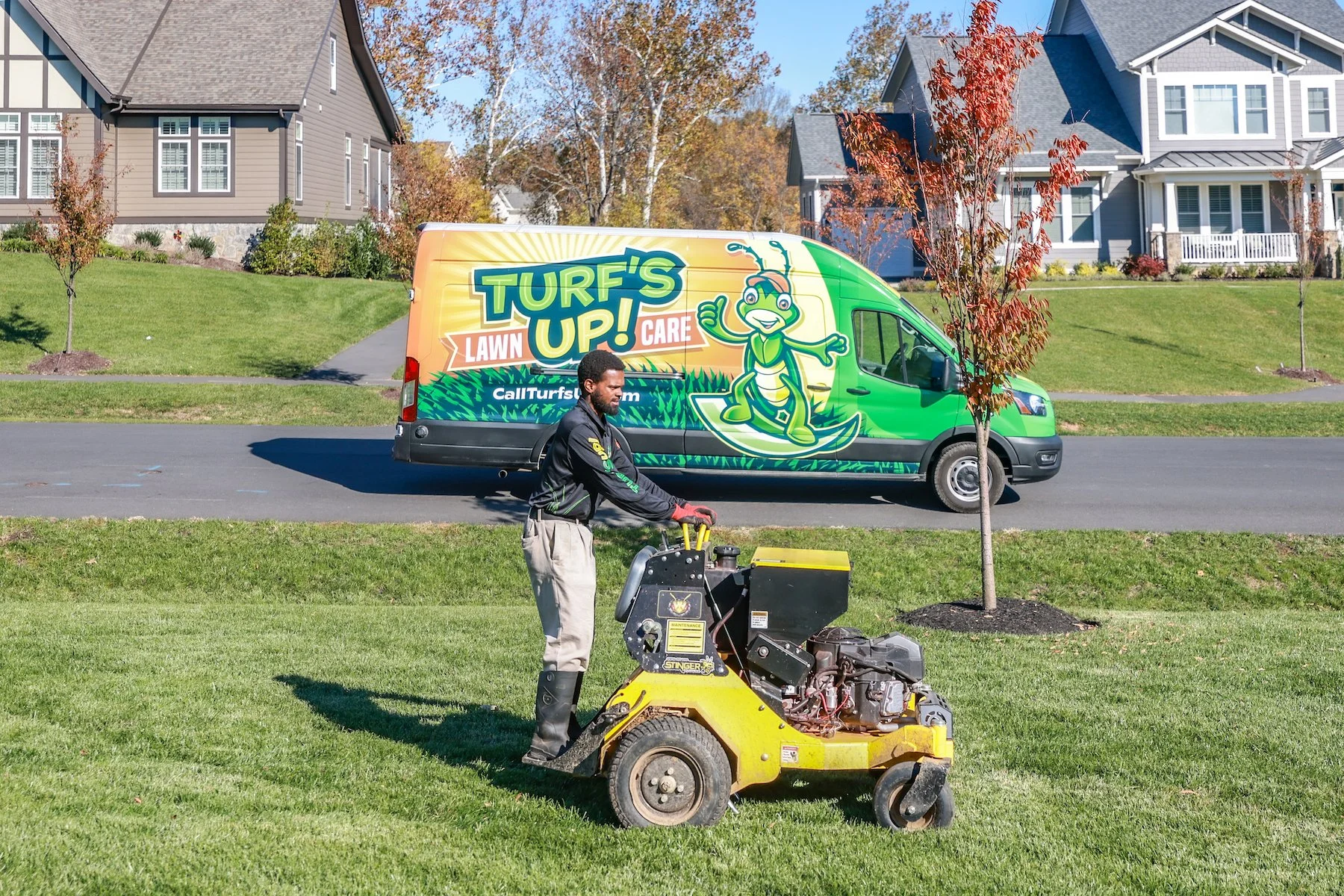
But a healthy lawn can be a big part of your weed defense strategy – no matter if you’re dealing with broadleaf weeds vs. grassy weeds. Turf’s Up defines a healthy lawn as one that is mowed to a 3.5- to 4-inch height, watered well ( not too much and not too little), has the proper balance of nutrients that are delivered based on soil test results, and receives annual aeration, overseeding, and topdressing to reduce compaction and bare areas. Your goal is to create an optimal environment for desirable grass to grow over weeds.
While your thriving, thick lawn can repel weeds, they can still find little spots to break through when conditions are good. That’s when you really want a comprehensive weed control strategy to help you get rid of broadleaf and grassy weeds. This will include proper weed identification, since the control strategy will heavily depend on what the weed is, as well as a preventive and curative approach to thoroughly battle each weed type.
Fight Both Broadleaf Vs. Grassy Weeds in Northern Virginia
You want to be outside enjoying your lawn – not constantly staring at your grass trying to tell the difference between grassy weeds vs. broadleaf weeds. You definitely don’t want your lawn to look like the most neglected on the block.
How can you fight all these different weed types? Let Turf’s Up help. We offer complete, proactive lawn care services that include proper fertilization, as well as both preventive and curative weed control, throughout the growing season. Not only does it make you look like the smartest neighbor on the street because you have the best looking lawn that seems effortless to maintain, but it’s also the best way to keep your grass weed-free.
Remember, weeds may seem like they show up overnight, but they hang out for a while until conditions help them thrive. And just as they slowly sneak in and take over, they can take just as much time to eliminate – especially without the proper weed control strategy. With consistent monitoring and control from a professional who knows lawn weeds in Northern Virginia and focuses on continually building your lawn’s health, your grass has a fighting chance to become more weed resistant.
Ready to learn why Turf’s Up could be your totally awesome choice for lawn care services in Leesburg, Ashburn, and Aldie, VA? We’re stoked to learn more about you and help you have the best lawn on the block. Get started today with a free quote. Together, we can prepare a customized plan that is perfect for you and your lawn.
Image Source: chickweed

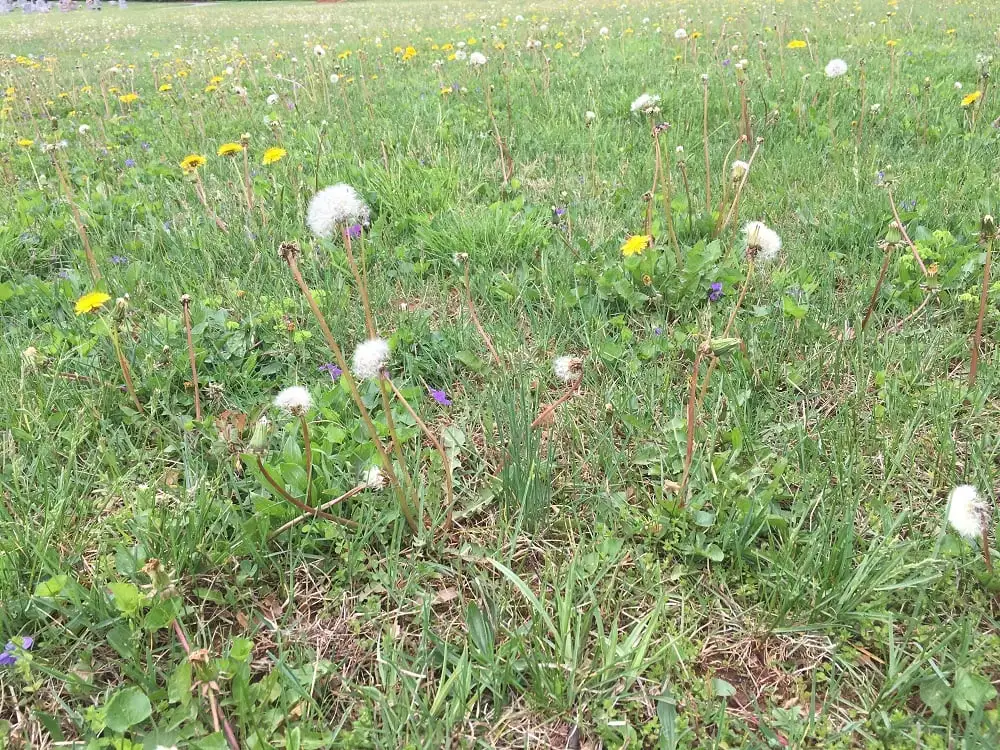




Comments (0)
Thanks for your comment!
Thanks for your feedback! Your comments have been successfully submitted! Please note, all comments require admin approval prior to display.
Error submitting comment!
There is a problem with your comment, please see below and try again.